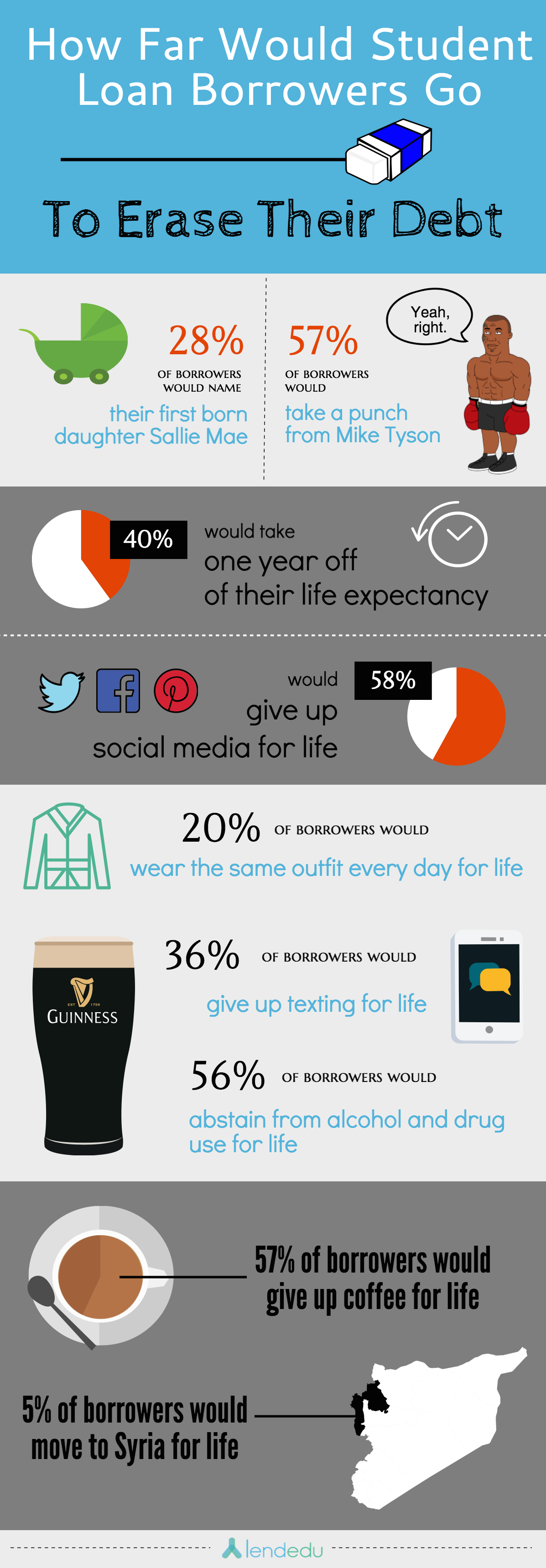Today, one in seven Americans currently has student loan debt. If you’ve recently graduated, this fact should come without surprise. Higher education is expensive, and increasingly students and families are turning to student loan debt to finance their education. Tuition hikes, generous loan limits, and the recovering economy has pushed the outstanding amount of student debt in the United States to $1.3 trillion!
Last month, the LendEDU team stumbled onto an interesting report from American Student Assistance, a private not-for-profit dedicated to opening the gateway to opportunity by revolutionizing the way students approach, finance, and repay their higher education. American Student Assistance reports that student loan debt has caused 29% of student loan borrowers to put off marriage, and 43% of borrowers to delay starting a family. The report went onto say that 73% of student loan borrowers have put off saving for retirement as a result of student debt. And, in a report from GoodCall, researchers learned that student loan debt costs borrowers a whopping $500,000 in retirement savings.
This got us thinking… what would student loan borrowers be willing to do to erase their debt? In January we found out that current students
Survey Results
Here are the highlights from our survey:

- 28.07 percent of borrowers would name their first born daughter Sallie
Mae, if it meant that they would have no more student loan debt. - 40.35 percent of borrowers would take one year off of their life expectancy, if it meant that they would have no more student loan debt.
- 56.73 percent of borrowers would take a punch from Mike
Tyson, if it meant that they would have no more student loan debt. - 6.47 percent of borrowers would cut off their pinky
finger, if it meant that they would have no more student loan debt. - 4.09 percent of borrowers would contract a random sexually transmitted disease (STD) for
life, if it meant that they would have no more student loan debt. - 57.89 percent of borrowers would give up all social media for
life, if it meant that they would have no more student loan debt. - 20.47 percent of borrowers would wear the same outfit, every day, for life, if it meant that they would have no more student loan debt.
- 35.67 percent of borrowers would give up texting for
life, if it meant that they would have no more student loan debt. - 56.14 percent of borrowers would abstain from alcohol and drug use for
life, if it meant that they would have no more student loan debt. - 57.11 percent of borrowers would give up coffee for
life, if it meant that they would have no more student loan debt. - 4.68 percent of borrowers would move to Syria for
life, if it meant that they would have no more student loan debt.
View these results how you like. That being said, we think it is clear that current student loan borrowers are feeling pressured by their debt. It is interesting to see the lengths that current borrowers are willing to go to pay off their student debt. Unfortunately, none of these options are currently available under the Department of Education’s Public Service Loan Forgiveness program. Moreover, private student loan lenders do not offer forgiveness programs.
For reference, our average respondent held $31,762 in debt at the time of the survey. This number was self reported by the respondent. In addition, 61 percent of respondents were female and 39 percent of the respondents were male. Respondent ages ranged from 22 to 61 years old. All of the respondents graduated from a 4-year college.
See more of LendEDU’s Research
About our contributors
-
 Written by Dave Rathmanner
Written by Dave RathmannerDave Rathmanner has researched and developed content on a variety of finance topics, such as student loans, personal loans, credit cards, and small business loans.